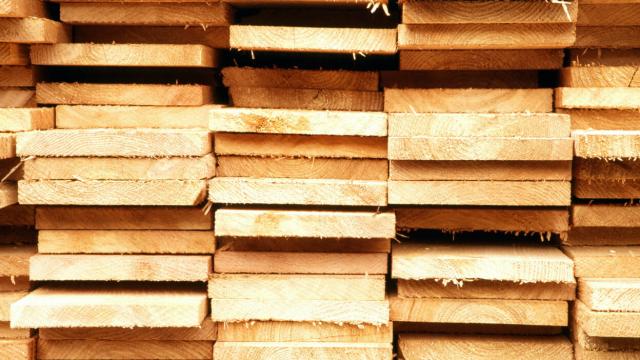If you have a home project that’s taking a while, it’s likely that you’ve thought of saving space by storing your lumber outdoors. It can seem like a good way to alleviate the clutter caused by home improvement projects, but it’s not always a great idea. Here’s when it’s OK and when it’s not, and how you can identify damage from improperly stored lumber.
It depends on what you’re planning to do with your lumber
If your lumber is for a garden trellis, a smaller personal project, or something that isn’t load bearing, you don’t need to worry as much about storing lumber outdoors. Any damage that you find will be annoying, but it won’t be dangerous, so have at it if you’re willing to put up with some flaws. If you’re building a deck or framing in a new tub, you’ll want to ensure that your lumber is in good enough shape to retain its rating and be safe to carry the weight of what will go on top of it. In this type of application, safety first is the best motto.
It depends on what type of lumber it is
In general, plywood and many types of composite lumber that are made by pressing several layers of wood together, using an adhesive to bond it into a sheet or a stick, won’t survive being wet for very long. Since the different layers of wood will expand and contract with moisture and temperature changes at different rates and opposite directions, exposure to the elements can make this type of lumber pull apart and bubble, ruining its structural integrity. Solid wood, like two by four boards, however, might withstand the elements a little better, as it’s from a single tree that will mostly expand and contract all at once, causing it less damage with temperature and moisture changes.
Dry it out first
If you have a pile of lumber that’s been stored outdoors, it’s likely gotten wet. To assess whether or not it’s safe to use, you should dry it out before you do anything else. Set the lumber out in the sun for a few hours, rotating it to get sun exposure on all sides and look for any signs of rot as you go. If sunshine isn’t in the cards, you can lay it out in a garage or home shop with a fan or even a space heater to dry it out. If the lumber is slimy, has soft spots, or has major discoloration, you might not be able to salvage it—these are signs of mold and rot.
Clean it up
Once the lumber is dried out, you should clean it using a rag. Wipe away any dirt, bugs, or other debris and assess the surface. If you notice splintering that’s deeper than about a 16th to an eighth of an inch, the lumber can’t be used for structural purposes anymore—but you could still salvage it for use in a less high-risk application, like building shop furniture. If you have minor scarring to the surface of the wood, you can give it a light sand to remove any splinters. You should also look for small holes and any accumulation of sawdust with no evidence of it being from tools. These can both be indications of insect damage; if discovered, it’s time to retire these boards.
Take a section
If you can’t tell how damaged your boards are, you can get a better look by cutting into one of them to see what it looks like inside. If you cut into it and see insect tunnels or rot, you should retire them. If it looks solid, then you can add this to your checklist for lumber that can likely be saved.
Compare it to a newer piece of wood
If you have an example of the type of wood you want to use that’s newer and undamaged, you can compare the features of your older, weather-worn boards with a newer one to see if they’re alike. The lumber should be the same size and shape as its newer counterpart and have roughly the same hardness. It should feel like it’s about the same weight once it’s dried out, too.

Leave a Reply
You must be logged in to post a comment.